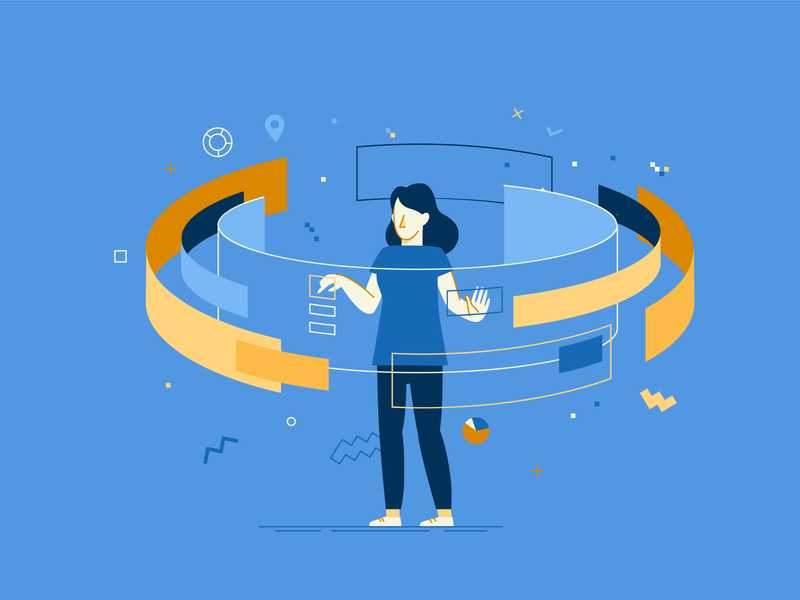Free UX Design Course
Dive into UX design with our free starter course. Transform your creative ideas into user-friendly solutions.
Boston is a hidden gem of a city when it comes to UX/UI design. While it might not have San Francisco’s high density of tech companies, New York City’s diversity of industries, or Seattle’s major conglomerates like Amazon or Microsoft, it does have three sectors that have given rise to the demand for UX/UI designers.
The three key industries in the Greater Boston Area are healthcare, finance and insurance, and higher education, with each category having significant players such as Massachusetts General Hospital, Brigham and Women’s, and Children’s Hospital, Boston; Liberty Mutual Holdings Company, State Street Bank & Trust Co, and Fidelity; and Boston University, Massachusetts Institute of Technology, and Harvard University. As these industries innovate to maintain their competitive advantage, UX/UI designers have gone from being “nice-to-have” employees to vital contributors to the user-friendliness of the products, services, and courses these organizations offer.
The density of top-tier higher education institutions in Boston has also fueled the city’s transformation into a startup hub in its own right—many companies have set up shop in Boston to take advantage of the talent graduating from some of the world’s most prestigious academic institutions. A large number of college graduates from the area are also choosing to stay in Boston to launch their startups.
On top of all that, Boston is one of the most beautiful and historic cities in the United States that’s walkable, offers access to world-class healthcare, and is more affordable compared to other tech hubs in the country.
UX designers and UI designers are in high demand, enjoy generous salaries, and get to solve complex and impactful problems. Read on to learn more about how to get a job as a UX/UI designer in Boston.
How to become a UX/UI designer in Boston
-
Design skills.
-
Practice, practice, practice.
-
Show that you think about the user.
-
No name? No problem.
There’s no set path to becoming a UX/UI designer in Boston, but below are some proven tips to get you closer to that dream UX/UI design job.
- Design skills. Regardless of the city or industry in which you choose to work, if you want a career in UX/UI design, you’ll need to equip yourself with some foundational skills such as creating wireframes, user flows, site maps, and high fidelity prototypes; incorporating user research and feedback into graphic design, visual design, and interaction design; performing user testing and being an advocate for the user; proficiency with design tools such as Figma and Photoshop; and collaborating with stakeholders such as product managers and a larger design team. While many of these skills can be self-taught, introductory design courses and in-depth UX design bootcamps are a great way to fast-track your learning, get you up to speed on design process best practices, and help you build a job-scoring portfolio.
- Practice, practice, practice. Find opportunities to apply user-centric design principles to projects. UX/UI design is a visual field, so create your own sketches, mockups, and storyboards for how a website, platform, or app can be improved; identify usability problems that can be resolved through UX research and brainstorm possible solutions using design thinking. Even if you have to create your own opportunities through personal projects or unsolicited redesigns, this will give you the chance to practice your skills and show a potential hiring manager your passion and enthusiasm for the craft.
- Show that you think about the user. The three dominant industries in Boston are healthcare, finance and insurance, and higher education. The latter has birthed a burgeoning startup scene with companies spanning categories such as artificial intelligence, e-commerce, fintech, and big data. This means that when you’re applying to a UX design job, you’ll need to consider the specific experiences and needs of product owners and the goals of the product or service. Show that you understand an organization’s mission, the characteristics of its users, and be an advocate for both.
- No name? No problem. Many of Boston’s startups, born from Harvard, MIT, Boston University, and Tufts talent, aren’t household names and, given the technical and non-consumer facing nature of their work (AI, big data, DevOps, health and insurance tools for brokers, etc.), are unlikely to be. But just because they’re not widely known doesn’t mean they don’t have compelling opportunities for UX/UI designers. If you’re looking to be a UX/UI designer in Boston, don’t write-off a company just because you’ve never heard of it—in 2019 alone, 41 Boston startups raised more than $920 million, and many more have a promising future.
What kind of UX/UI design jobs are available in Boston?
Boston’s mix of legacy institutions such as universities and insurance firms and the many startups to have come out of those institutions means that there’s a diversity of opportunities for UX designers, regardless of experience or expertise. For example, smaller startups hiring their first lead UX designer can offer qualified applicants a way to flex their creativity and problem-solving skills and have a huge impact on the company. Meanwhile, larger, more established companies with existing design teams can offer more resources and support (such as insight from UX research, data science, and software engineering teams) to UX designers who prefer to work within a team.
On the experience spectrum, Boston area companies like Corvus Insurance, LinkSquares, and Accenture all recently posted job listings for junior UX designers (1-3 years of experience), while companies such as Fidelity, VMWare, CVS Health, and MIT sought UX designers with at least 5+ years of experience.
Get To Know Other Design Students
Dominick Andre
UX Designer at Fidelity Investments
Trixy Woodhouse
UX Designer at Nike
Florence Chan
Product Designer at Zola
What companies are hiring UX/UI designers in Boston?
Some Boston-based companies (or companies with Boston outposts) that are hiring UX/UI designers include:
- Fidelity Investments
- Massachusetts Institute of Technology
- Harvard University
- Tufts University
- VMWare
- Motional
- Turbonomic
- Thought Industries
- IBM
- Cynet Systems
- Corvus Insurance
- Wayfair
- Deloitte
- CVS Health
- Starburst
- Proton.ai
- Accenture
- Nike
- Cargurus
- Klaviyo
- LinKSquares
- Yesware
- Luminoso Technologies Inc.
UX/UI designer salary in Boston
UX/UI designers in Boston can make upwards of $100,000 a year, according to Glassdoor.
Entry-level UX/UI designers in Boston earn an average base salary of around $73,869, with cash and stock bonuses that can range between $1,500-16,000.
Senior-level UX/UI designers in Boston earn an average base salary of around $98,530, with cash and stock bonuses that can range between $2,000-20,000.
UX/UI designer networking opportunities in Boston
There are many casual and formal UX/UI design groups and conferences held in Boston where designers can network, share career and collaboration opportunities, and post listings for UX designer jobs. Some of those groups include:
- Built In Boston
- StartHub Boston
- Startup Grind Boston
- UXPA Boston
- Health Experience Design Conference
- MIT StartLabs
- UX Boston Meetup
- Boston UX Social Hour Meetup
- Ladies that UX Boston Meetup
- UX Happy Hour Boston Meetup
How to land an entry-level UX design job in Boston
Many entry-level UX/UI design jobs in Boston require candidates to know at least the basics of design—from familiarity with tools such as Sketch and Figma to knowing how to apply design thinking to solve a problem. These skills can be learned without any prior design or technical experience.
Springboard’s Introduction to Design offers a four-week crash course in the fundamentals needed to launch a career in UX/UI design. In addition to covering design tools, principles, and research, the course matches students with a dedicated industry expert mentor who offers both instruction and guidance on the best path into a career in UX/UI design.
The course is a great way to get a taste of what it’s like to be a UX/UI designer at a fraction of the commitment. Those interested in going further can sign up for Springboard’s UX/UI Design Career Track, a comprehensive, flexible, and mentor-supported course that prepares every graduate for the competitive UX/UI job market.
Since you’re here…
Not sure where you’ll find the time to learn UX and UI skills? We’re here to help. Our fully flexible UI/UX Design Bootcamp takes just 12-15 hours a week over 6 months and is proven to increase student salaries by $25,033 on average per annum. We’ve helped over 10,000 students make the switch without quitting their day jobs – shouldn’t you be next? Jump in today with our free design fundamentals course.






